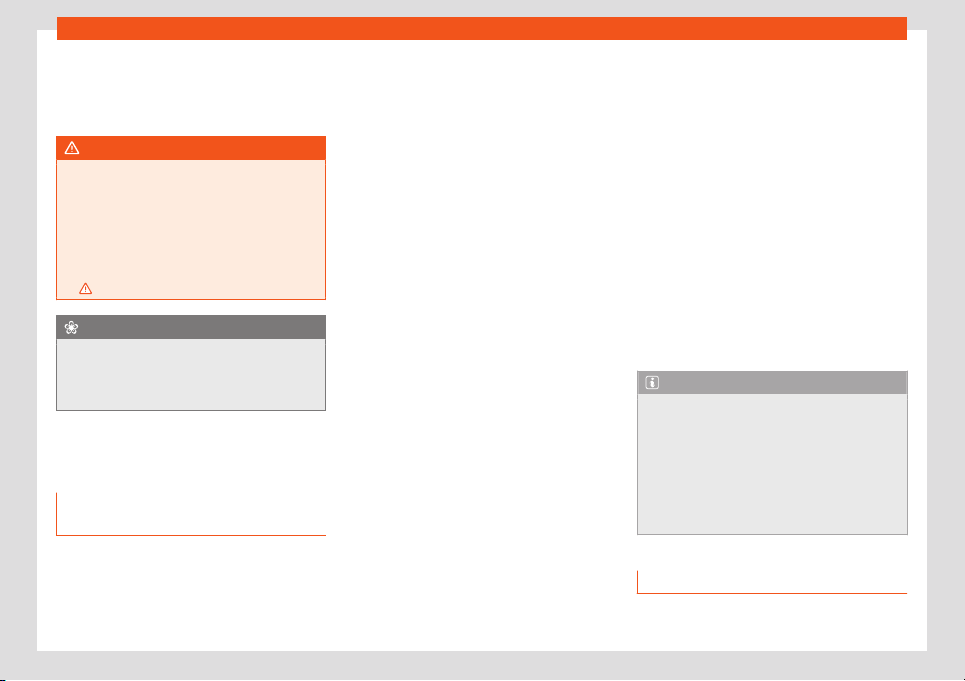Loading ...
Loading ...
Loading ...

Checking and refilling levels
management function after the battery has
been changed, hav
e the battery coded to the
power management mode at a specialised
workshop.
WARNING
●
Al
ways use only maintenance free bat-
teries that do not run flat alone and whose
properties, specifications and size corre-
spond to the standard battery. The specifi-
cations are indicated on the battery case.
●
Before starting any work on the batteries,
you must read and observe the warnings
›››
in General information on page 347.
For the sake of the environment
Batt
eries contain toxic substances such
as sulphuric acid and lead. They must be
disposed of appropriately and must not be
disposed of with ordinary household waste.
Energy management
Optimisation of the st
arting ca-
pacity
The power management controls the distri-
bution of el
ectrical energy and thus helps to
ensure that there is always enough power
available to start the engine.
If a vehicle with a conventional electrical sys-
tem is left parked for a long time, the battery
will gradually lose its charge because certain
electrical devices, such as the electronic
gearbox lock continues to draw current even
when the ignition is off. In some cases there
may not be enough power available to start
the engine.
Your vehicle is equipped with an intelligent
power management system to control the
distribution of electrical energy. This signifi-
cantly improves reliability when starting the
engine, and also prolongs the useful life of the
battery.
The main functions incorporated in the power
management system are battery diagnosis,
residual current management and dynam-
ic power management.
Battery diagnosis
The battery diagnosis function constantly
registers the condition of the battery. Sensors
detect the battery voltage, battery current
and battery temperature. This enables the
system to calculate the current power level
and charge condition of the battery.
Residual current management
The residual current management reduces
power consumption while the vehicle is
parked. It controls the supply of power to the
various electrical devices while the ignition is
switched off. The system takes the battery di-
agnosis data into consideration.
Depending on the power level of the battery,
switch off the individual electrical devices
one after the other to prevent the battery
from losing too much charge and to ensure
that the engine can be started reliably.
Dynamic power management
While the vehicle is moving, this function dis-
tributes the available power to the various
electrical devices and systems according to
their requirements. The power management
ensures that on-board systems do not con-
sume more electrical power than the alterna-
tor can supply, and thus maintains the maxi-
mum possible battery power level.
Note
●
Neither is the po
wer management system
able to overcome the given physical limits.
Please remember that the power and use-
ful life of the battery are limited.
●
If there is a risk that the vehicle may not
start, the alternator electrical failure or low
battery charge level warning lamp will be
shown
›››
page 348
›››
page 349.
Flat battery
Starting ability has first priority.
»
351
Loading ...
Loading ...
Loading ...